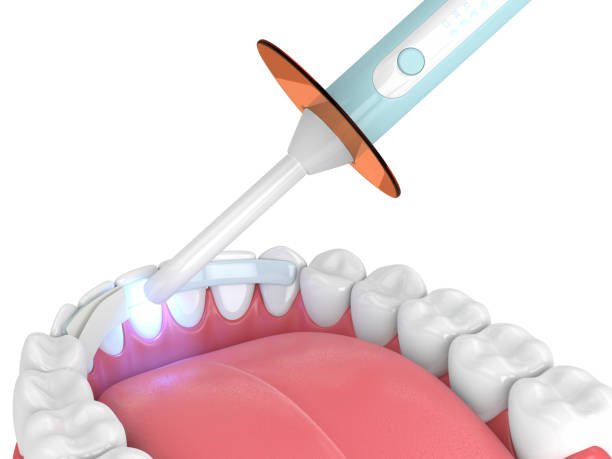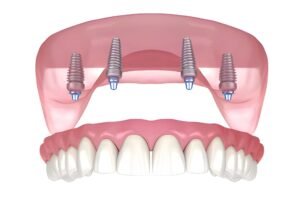Cosmetic and restorative dentistry offers numerous ways to improve the health and look of your teeth. Two common procedures are dental bonding and dental fillings. While they share some similarities, they also have unique differences. This article will explore the distinctions and help you understand which treatment might be best for you.
Understanding Dental Bonding
Dental bonding is a procedure that addresses both cosmetic and restorative issues. It involves the application of a tooth-colored resin to your tooth. This resin is a durable plastic material that hardens through the use of a special light. The resin bonds to your tooth and can restore or improve the look of your smile.
Benefits of Dental Bonding
Dental bonding can improve a variety of dental issues:
- Chips and cracks
- Discoloration
- Misshapen teeth
- Gaps between teeth
The procedure is relatively quick, often taking only one visit and usually lasting no more than 30 minutes to an hour. In most cases, you won’t need any anesthesia, making it a smooth and pain-free process, especially beneficial for those with dental anxiety. Dental bonding is also cost-effective while providing impressive results. The resin can mimic your natural tooth’s color, so nobody will notice a difference when you smile. With proper care, dental bonding can last up to ten years.
Understanding Dental Fillings
Dental fillings are primarily used to address restorative issues, particularly tooth decay. Fillings are the most common dental procedure. They help prevent further decay and restore the tooth’s functionality.
How Dental Fillings Work
The process begins with your dentist examining your tooth to ensure it is strong enough for a filling. Local anesthetic is applied if needed. The dentist then drills a small hole to remove the decay. This hole is filled with the chosen material, which prevents further decay from spreading.
Types of Filling Materials
Various materials can be used for dental fillings, including:
- Silver-colored fillings
- White tooth-colored composite fillings
- Gold fillings
- Glass ionomer fillings
- Porcelain fillings
White, tooth-colored composite and porcelain fillings are best. They blend with your natural teeth. Depending on the material, fillings can last between 5 and 25 years with proper oral care.
Key Differences Between Dental Bonding and Fillings
While both dental bonding and fillings use similar materials, they serve different purposes.
Purpose and Application
- Dental Bonding: It is mainly for cosmetic fixes. It can fix chips, cracks, and discoloration. It can also fill gaps between teeth and reshape misshapen teeth.
- Dental Fillings: Used to restore the tooth’s functionality by addressing cavities and decay. They are essential for preventing further tooth decay.
Procedure
- Dental Bonding: The resin is applied to the tooth, then shaped and hardened with a special light. It’s a non-invasive, pain-free procedure that usually doesn’t require anesthesia.
- Dental Fillings: The dentist removes the decayed part of the tooth and fills the space with a durable material. Local anesthetic is often needed to prevent discomfort.
Longevity and Maintenance
- Dental Bonding: Lasts up to ten years with proper care. Regular dental check-ups and good oral hygiene are essential to maintain the bonding.
- Dental Fillings: Can last between 5 and 25 years, depending on the material used and how well you take care of your teeth.
Cost and Insurance
Dental bonding is usually cheaper than other cosmetic treatments. But, the price can vary with the amount of work needed. Dental fillings can also vary in cost depending on the material chosen. Both procedures may be covered by dental insurance, especially if they are deemed medically necessary.
Aftercare for Dental Bonding and Fillings
Proper aftercare is crucial to extend the life of both dental bonding and fillings.
Aftercare Tips
- Avoid Hard Foods: Hard candies and ice can damage bonded teeth and fillings.
- Maintain Oral Hygiene: Brush twice a day, floss daily, and use mouthwash.
- Regular Dental Check-ups: Visit your dentist regularly for check-ups and cleanings.
- Avoid Staining Foods: Coffee, tea, and red wine can stain bonded teeth.
Conclusion
Dental bonding and fillings are both effective dental treatments but serve different purposes. Dental bonding is great for cosmetic fixes. Fillings are vital for restoring a tooth’s function after decay. Consulting with your dentist can help determine which procedure is best for your dental needs.
Consult with Old Town Dental Care
If you are unsure whether dental bonding or fillings are the right choice for you, consult with the experts at Old Town Dental Care. Our experienced dentists can evaluate your dental needs and recommend the best treatment to improve your smile and dental health. Schedule your appointment today to take the first step towards a healthier, more confident smile. Visit Old Town Dental Care or call us to book your consultation. Your perfect smile awaits!







